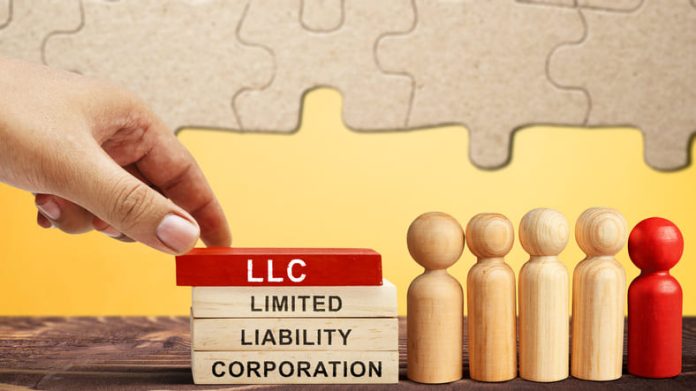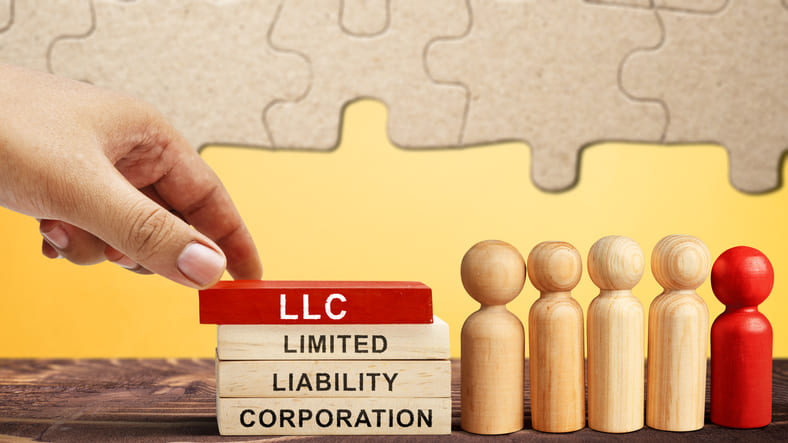[ad_1]

Forming a Limited Liability Company is an important milestone for many business owners, offering flexibility in management and some protection from personal liability.
However, understanding tax obligations can often be daunting, especially for new LLCs that haven’t yet begun to generate income. Despite the lack of financial activity, it’s important to file taxes for your LLC to comply with IRS regulations, maintain the entity’s legal status, and prepare for future business growth.
Understanding of LLC structure
How LLCs are classified for taxes
An LLC can be classified for tax purposes in several ways, depending on how it is formed and the choices made by its owners. The IRS does not tax LLCs directly; instead, they are treated as pass-through entities, where income is passed through to the members or owners who report it on their tax returns.
By default, a single-member LLC is classified as a disregarded entity, similar to a sole proprietorship, meaning that the member reports the LLC’s income and losses on his or her tax return using Schedule C.
Multi-member LLCs are automatically classified as partnerships, requiring the filing of Form 1065 and the distribution of K-1 forms reporting each member’s share of income or loss.
Alternatively, an LLC may elect to be taxed as a corporation, either an S corporation or a C corporation, by filing IRS Form 8832 (Entity Classification Election) and possibly Form 2553 (Election by a Small Business Corporation). This election can have a significant impact on an LLC’s tax liability, with different benefits and requirements. Additionally, making such a classification change can influence the specifics of a small business tax return.
Legal implications of filing taxes for an LLC with no income
Filing taxes for a non-income LLC is more than a bureaucratic formality; it is a legal requirement that maintains the entity’s compliance with federal and state tax authorities.
Even without generating revenue, filing a tax return ensures that your LLC remains in good standing, which is critical to protecting your limited liability status. This act demonstrates to the IRS and others that your LLC is an active business.
Failure to file can result in penalties and possible dissolution of the LLC’s status, exposing members to liabilities and disrupting future business activities.
In addition, filing a no-revenue return prepares your business for when it begins to generate income, smoothing the way for more complicated tax filings in the future.
Tax benefits and deductions for LLCs
Deductions for startup costs
One of the most significant tax benefits for new LLCs is the ability to deduct start-up costs. These are expenses incurred before you begin active trading.
According to IRS guidelines, startup costs can include market research, travel related to business formation, advertising to open the business, and legal and accounting fees incurred during the formation of the business entity.
The IRS allows you to deduct up to $5,000 in start-up costs in the year your business begins operations. Any amount in excess of $5,000 can be amortized over 15 years, beginning with the month in which you begin operations.
Operating expense deductions
Once your LLC begins doing business, it can begin deducting business expenses, even if there is no income yet. Operating expenses are the costs associated with running your business and can include rent, utilities, office supplies, and salaries paid to employees. These are considered “ordinary and necessary” expenses for the operation of your business, as defined by the IRS.
For LLCs, even those with no income, deducting these expenses can be beneficial. While these deductions cannot create a tax refund in years with no income, they can be carried forward to offset income in future profitable years.
This carryforward can significantly reduce the tax burden when the business begins to generate revenue, providing a smoother financial transition from startup to successful business.
Special deductions and credits
Home office deduction
The home office deduction is one of the most valuable tax deductions available to LLC members who conduct business out of their homes. To qualify, you must have a designated area in your home that is used exclusively and regularly for business.
This area must be your principal place of business or a place where you regularly meet with clients or customers.
The IRS offers two methods for calculating the home office deduction:
- The simplified method. This method allows a standard deduction of $5 per square foot of home used for business, with a maximum of 300 square feet, for a maximum deduction of $1,500 per year.
- Regular method. This involves calculating the actual expenses of your home office, including a portion of utilities, property taxes, insurance, mortgage interest, and repairs, based on the percentage of your home’s square footage used for business.
Depreciation of assets
Depreciation is another important area where tax benefits can be realized. It allows the cost of tangible assets purchased for business use to be expensed over the life of the asset rather than all at once, providing a tax shield. Common depreciable assets include buildings, machinery, vehicles, furniture, and computers.
To depreciate an asset, you must use it in your business or income-producing activity, it must have a determinable useful life, and it must be expected to last more than one year. The IRS provides several depreciation methods and systems, including
- Straight-line depreciation: The simplest method, in which the cost of the asset is spread evenly over its useful life.
- Accelerated depreciation methods (such as the MACRS): These methods allow for larger depreciation deductions in the early years of an asset’s life.
Depreciation allows businesses to reduce their taxable income each year to reflect the cost and wear and tear of the asset over time. LLCS needs to keep detailed records of assets to support depreciation claims.
Requirements and procedures for filing
Necessary documentation and records
Here are the essential types of records you should keep:
- Bank statements. These provide a record of all financial transactions that flow through the company’s accounts.
- Receipts and invoices. Keep all receipts and invoices related to business expenses, even if the business has not yet generated revenue. These are essential for substantiating deductions and expenses.
- Legal documents. Including articles of incorporation, operating agreements, and any registration documents.
- Previous tax returns. If applicable, include returns from years when the business had no income, as they establish a continuity of filing.
- Records of asset purchases. Document when and how much you paid for assets that can be depreciated over time.
Accurate recordkeeping makes it easier to prepare tax returns and can help identify tax deductions and plan for future tax liabilities.
Tax filing steps for a no-income LLC
Filing taxes for a non-income LLC may seem unnecessary, but it’s critical for several reasons, including maintaining the entity’s legal status and preparing for future profitability. Here’s how to navigate the process:
1. Confirm your LLC’s tax classification. Knowing whether your LLC is considered a disregarded entity, a partnership, or a corporation will determine which forms you need to file.
2. Gather necessary documentation. Gather all relevant financial documents as described above.
3. Complete the appropriate tax forms:
- Single-member LLCs. Typically file a Schedule C with their Form 1040, even if it reports no income.
- Multi-member LLCs. Must file Form 1065, Partnership Return of Income, and issue K-1 forms to members reporting their share of the LLC’s income or loss.
- LLCs are taxed as corporations. File corporate tax returns on Form 1120 or 1120S, depending on whether they’re classified as a C or S corporation.
4. File the forms with the IRS. Make sure the forms are filed by the tax deadline (April 15, or the next business day if it falls on a weekend or holiday). If necessary, file for an extension using Form 4868 for individuals or Form 7004 for businesses, which provides additional time to file, but not to pay, taxes due.
5. Keep copies of your tax return. Always keep copies of what you’ve filed for your records and possible future audits.
Following these steps will help ensure that your LLC remains in compliance with IRS requirements, even if it has not generated any income. This proactive approach can smooth the transition to profitability and potential tax liabilities in the future.
Bottom line
Starting an LLC with no income presents unique challenges, but also significant opportunities for tax planning and business development. By understanding and taking advantage of available tax benefits and deductions, keeping meticulous records, and strategically planning for future profitability, you can lay a solid foundation for your business’s success.
Whether you’re managing losses or preparing for potential gains, a proactive approach in these early stages will pay dividends in the long run.
Remember, consulting with tax professionals and financial advisors can provide tailored advice that is invaluable as your business grows and evolves.
This preparation not only ensures compliance with current tax laws but also positions your LLC to take full advantage of financial opportunities as they arise.
The views expressed in this article are those of the authors and do not necessarily reflect the views or policies of The World Financial Review.
[ad_2]
Source link











